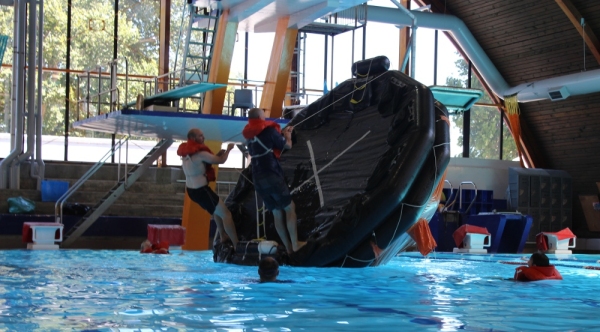Our 42 day adventure to Antarctica aboard NIWA’s RV Tangaroa is just beginning! My name is Blake Hornblow and I am a 2014 Blake NIWA Science Ambassador. I will be joining 40 crew and scientists from around the globe to study blue and humpback whales and Antarctic toothfish around the Balleny Islands and Ross Sea.
This opportunity of a life time came about from selection processes with the Sir Peter Blake Trust. An application and an interview led to a phone call that will change my life. It’s such an honour to be a part of the Sir Peter Blake Trust family and I feel so privileged to be a part of Sir Peter Blake’s legacy. I have just finished my first year studying Aquaculture and Fisheries and Marine Science at the University of Otago.
I am sharing a tiny five metre square cabin with my good friend and kayaking buddy Zac Penman. Our voyage will take us across the Southern Ocean through the roaring forties, furious fifties, and screaming sixties to the Balleny Islands and into the Ross Sea. The Balleny’s are at 67 degrees south and 164 degrees east, and there will be about 18 hours of daylight - and even more in the Ross Sea. It will take about a week depending on sea conditions for the Tangaroa to reach the Balleny Islands where we begin the whale surveys.
Because Zac and I haven't been to Antarctica before, or to sea for this long, we completed a four day STCW (Sea survival) course and an Antarctic survival training day as preparation (see video). The STCW course involved first aid, firefighting and survival techniques - all really valuable skills to have with us. We spent the weekend before leaving on the personal survival techniques, this involved learning what to do when we hear the emergency alarms and getting to our muster stations. The most exciting and practical part of the course was using the life rafts and immersion suits in the pool. Immersion suits are a survival suit used if we have to abandon ship. They are made of neoprene like a thick wetsuit, except everything but you nose and eyes are covered by a bright red buoyant suit. We jumped from three metres in the suits and flipped the overturned rafts. I’m sure it would be quite a challenge in the Ross Sea but it’s good to know what needs to be done in an emergency.
We were also trained in basic Antarctic survival techniques and it was very helpful learning from people with Antarctic experience. Skills like putting up the Antarctic tents, lighting the cookers in our survival kits and how to collect water efficiently in Antarctica were great to learn. On board the Tangaroa there is an Antarctic survival container that has everything we would need in case of an emergency if the inside of the ship cannot be accessed. It has enough food, clothes, and is even heated, for a few weeks of survival.
Our famous kiwi red socks are with us onboard the ship and with training completed I’m feeling nervous but prepared, and even more excited for the adventure to begin.
Blake

